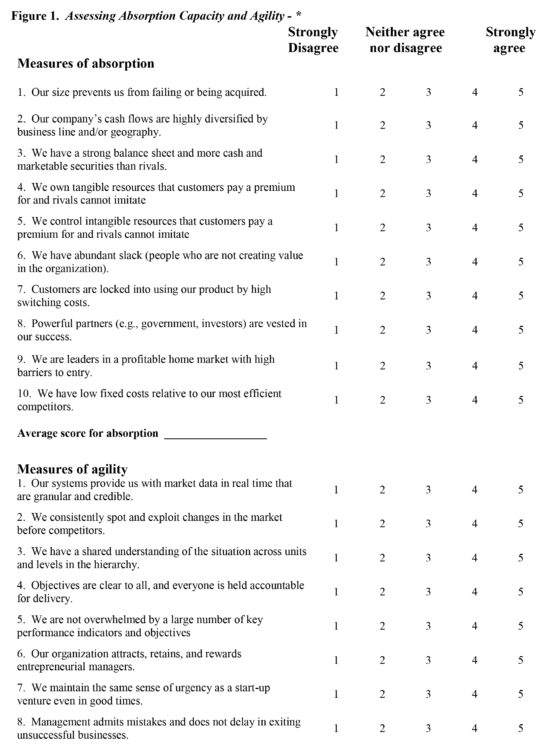June 1, 2015
Managing in Turbulent Times: Positioning to Capture the Upside, Buffer the Downside
Risk dominates the farming sector, and most farmers try to reduce or manage/mitigate the risks they take. Risk is perceived by most to be “bad” – – something to be avoided. But entrepreneurs and businessmen also know that without some risk, there likely is not much reward – – to obtain a reasonable return, you typically have to take some calculated risks. In fact “risk” or uncertainty has both an upside and a downside. The key management challenges are to make sure you are adequately rewarded for the risks you take; and to minimize the downside and capture the upside of the risks and uncertainties that you face or choose to take.
Certainly many of the operational and financial risks and uncertainties in farming can be managed or transferred to others through insurance or options and futures markets, but that is generally not the case with strategic risks. And often strategic risks or uncertainties provide significant opportunities for profits, so transferring them to others results in lost opportunity. So managing strategic risks requires a different approach – – recognizing and retaining the risk and positioning for the uncertainty. Successful positioning requires two attributes of a firm; 1) resiliency and absorptive capacity to handle the potential downside or negative consequences of an uncertainty, and 2) agility to detect and capture the potential upside or positive consequences of an uncertainty.
The absorptive capacity of a business or its resiliency to downside risk or uncertainty is impacted by a number of features or characteristics.
- Low fixed costs – These can help a firm weather a wide range of changes, such as price wars, higher raw material costs, and declining demand.
- War chest of cash – Cash is perfectly fungible, so it can be deployed against future contingencies that managers cannot foresee.
- Diversified cash flow – Companies can withstand downturns in specific units, and diversified units serve as a store of potential wealth that can be sold later.
- Too big to fail – Large firms can survive by off-loading operations and reducing head count in crises. Size also increases the odds the government, customers, or suppliers will prop up an ailing firm.
- Tangible resources – Valuable resources such as raw material deposits, real estate, and so on serve as a store of potential value.
- Intangible resources – Brand expertise, and technology can insulate the firm against changes in the market in the short and medium term.
- Customer lock-in – Switching costs prevent customers from easily jumping ship, buying a firm time when circumstances shift.
- Protected core market – Barriers to entry in a core market provide a safe stream of cash to weather storms.
- Powerful patron – A powerful government, regulator, customer, or investor vested in the firm’s success can buffer it from changes.
- Excess staff – The corporate equivalent of body fat, these employees serve as a store of value that can be shed in hard times.
Note that most of these sources of absorption/resiliency are not just happenstance or
predetermined, they are a function of conscious decisions to accomplish a specific goal or objective – – to position the business so that it can accommodate and absorb the unfortunate events it might encounter.
Critical characteristics or sources of agility that enable a business to capture the upside of risk and uncertainty; include the following:
- Strategic
- A strong balance sheet and a large war chest to finance big bets
- A governance structure that permits executives to seize opportunities more quickly than
rivals - Owners and executives with a long-term perspective
- Early recognition of market changes
- Willingness to exit
- Start-up/new venture mentality
- Portfolio
- A diversified portfolio of independent units
- A cadre of general managers who can be transferred across units
- Central corporate control over-important resources, such as talent and cash so they can be
reallocated - Regular, unbiased evaluation processes
- Structured processes for decreasing investments or selling off units
- Operational
- Shared real-time market data that are granular and credible
- A small number of corporate priorities to focus effort
- Clear performance goals for teams and individuals
- Mechanisms to hold people accountable and to reward them
- Again, conscious management decisions can enhance this capability to capture future
opportunities.
Figure 1 provides an assessment tool that can be used to evaluate the skills of the manager and capacity of the firm to have the resiliency to absorb the potential downside and agility to capture the potential upside of the uncertainty in farming
*Sull, Donald, The Upside of Turbulence: Seizing Opportunity in an Uncertain World, Donald Sull.–1st edition. 2009.
TAGS:
TEAM LINKS:
RELATED RESOURCES
UPCOMING EVENTS
December 1 & 8, 2025
Join Purdue Extension for a two-part workshop designed to help you gain a clearer understanding of tax planning essentials. The first session on December 1 will focus on the fundamentals of farm taxes, with particular emphasis on strategies that can be used in a low net income year. The second session on December 8 will focus on key tax strategies and will allow plenty of time for questions. Registration cost is only $20.
Read MoreDecember 15, 2025
This program provides in-depth coverage of agricultural and farm tax issues. In addition to covering timely tax issues, we will cover disaster tax issues, depreciation and expensing farm assets, retirement planning for farms, and tax planning in low-income years. This year’s webinar will be co-taught by a team from Ohio State and Purdue Universities.
Read MoreJanuary 27 or 28, 2026
Farm Shield is more than a conference, it’s a commitment to helping agricultural families build resilience and plan for a secure future. Don’t miss this opportunity to protect your legacy!
Read More